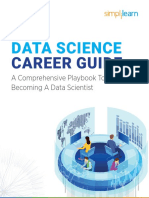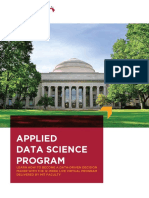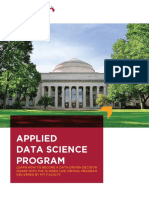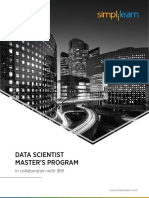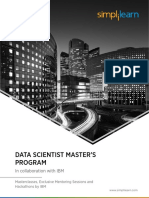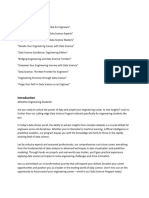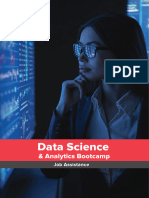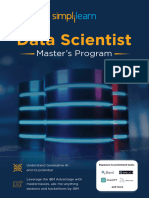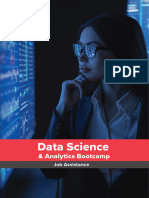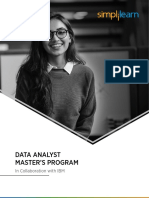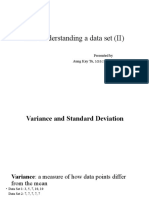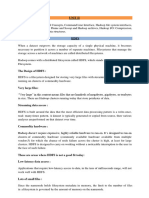0% found this document useful (0 votes)
66 views32 pagesCaltech - Data Science Bootcamp
The Caltech Data Science Bootcamp is designed for working professionals seeking to enhance their skills in data science through a blend of theory, hands-on projects, and mentorship. Participants will gain exposure to key tools and concepts, including generative AI, machine learning, and data visualization, while earning a completion certificate and CEUs from Caltech CTME. The program includes a comprehensive learning path with core courses, electives, and a capstone project to solidify understanding and practical application.
Uploaded by
moinkhan8660Copyright
© © All Rights Reserved
We take content rights seriously. If you suspect this is your content, claim it here.
Available Formats
Download as PDF, TXT or read online on Scribd
0% found this document useful (0 votes)
66 views32 pagesCaltech - Data Science Bootcamp
The Caltech Data Science Bootcamp is designed for working professionals seeking to enhance their skills in data science through a blend of theory, hands-on projects, and mentorship. Participants will gain exposure to key tools and concepts, including generative AI, machine learning, and data visualization, while earning a completion certificate and CEUs from Caltech CTME. The program includes a comprehensive learning path with core courses, electives, and a capstone project to solidify understanding and practical application.
Uploaded by
moinkhan8660Copyright
© © All Rights Reserved
We take content rights seriously. If you suspect this is your content, claim it here.
Available Formats
Download as PDF, TXT or read online on Scribd
/ 32














